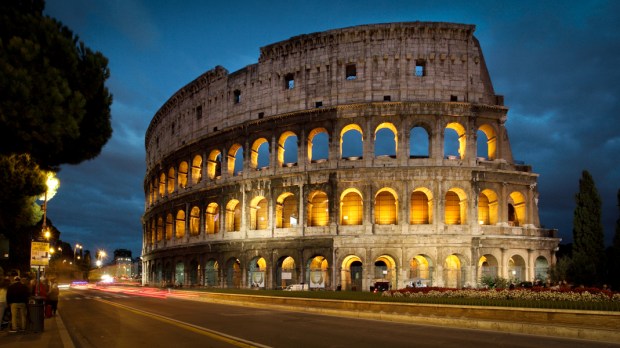Some stereotypical references to Ancient Greeks and Romans characterize the former as “heavenly-oriented,” mostly dealing with abstract thought, and the latter as down-to-earth, practical people, in an almost diametrical opposition. Even if this is quite an unfair depiction of the great Greek civilization (not to mention a poor understanding of the importance of abstract thought for practical issues), it is indeed true Romans would apply their wit to finding as many solutions as possible to everyday matters. And given the temperatures and humidity that usually accompany the Italian summer, they surely knew how to stay cool during the “dies caniculae” — the dog days of summer.
Patrick Browne, from The Local, gathered five ways we can learn how to cope with the summer heat like true Romans.
- Visit your local frigidarium
A frigidarium would be the equivalent of our modern public pools, with certain distinctive features. Specifically, it would be a large pool like the ones one finds in most Roman baths, kept exceptionally cold during summer by adding some snow and ice they would carry all the way from the Alps to the city.
- Leave work at noon
Of course, in order to make it to the frigidarium during the hottest hours of the day, you would need to leave work early. Ancient Romans, Browne reminds us, “did not do a nine-to-five day,” but rather would work only six hours per day during summer, from sunrise until noon. One was naturally expected to spend the rest of the day in the pool, among friends.
- Eat snow
Before gelato, there was snow, and both noblemen and plebeians would enjoy eating it. Noblemen and patricians would store it at home, and regular citizens would get theirs from the wells or icehouses where the very same ice and snow that would be used in every frigidarium was stored underground. There is even evidence that shops in Pompeii sold ices flavored with honey. Of course, snow was more expensive than wine.
- Turn the AC on. Or something like that.
Master architects as they were, Romans knew how to refresh their homes during the dog days of summer, but only the very wealthy few were able to afford these cooling systems we might compare to our contemporary ACs. Some patrician residencies would have a system that allowed them to pump cold water through their walls, freshening their dwellings. Some other would trade those systems for fountains in a central inner patio.
- Or you could just leave the city
Even today, urban centers are hotter than the countryside, for obvious demographic and architectural reasons. If you need proof, try walking around Manhattan any summer noon during early August. Romans would leave the great urban centers and simply flee to the surrounding hills, or all the way to the beach in Ostia. Cities are around 12 degrees Celsius hotter than their surroundings during the night. As Browne points out in his article, “that’s the difference between a good night’s sleep and a sweaty night spent tossing and turning.”

